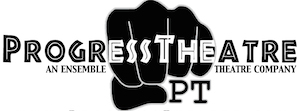By Joe Tolbert
This article is an edited transcript of a conversation that was facilitated by Joe Tolbert on February 8, 2016 with Linda Parris-Bailey, Executive/Artistic Director of the Carpetbag Theatre, Inc. – one of Alternate ROOTS’ founding companies – and Cristal Chanelle Truscott, Artistic Director of Progress Theatre.
Joe Tolbert (JT): ROOTS has a history of intentionally pairing artists with community to address community needs. What is your practice around community artist partnerships?
Linda Paris Bailey (LPB): I think our practice is diverse, because we don’t enter community with a particular formula. We enter the community with questions. We enter with the tools we have learned over the years, but our practice is to enter the community as learners and people who share a body of work.
There are particulars to communities and then there is the overarching American experience, if you will. And I think that our work in sharing those, as we call them, untold stories, it’s really about how we can help the community dig deeper into its own story. I’m always talking about what Jo [Carson] and others have called reframing. How does the story become useful? That’s very much central to our practice. If we are working in community, if we are working, even on our own ideas and issues, we have to figure out what is the reason to share a particular story in a particular time, in a particular way. That exploratory process involves the ensemble in conjunction with the community. That’s kind of the root of our practice.
Cristal Chanelle Truscott (CCT): Similarly, I would say the practice is diverse, because it has to be. It at least has to be open to diversity in order to make sure you really are listening and learning from the community and engaging in that call and response space with the community that you have been invited into, or you belong to.
I think my entry point into community collaboration and practice has always been one of depth over breadth and really trying to make sure that I am and we are speaking with and listening to the community before we even get there. I’m speaking particularly to the case of touring. When I was first starting out, my work had been commissioned and we were going to perform, and I realized immediately that the theater didn’t know how to get the people I wanted into the theater, into the theater. They didn’t have any way of helping me connect, and it was almost a bit like, What the hell? How does that happen? How do you not talk to the community? I didn’t understand that, so at that point our base was in New York, because we were all undergraduates at NYU, but by virtue of that, the campus community and the local community of New York, we would go somewhere,the first thing we did was reach out to our local community and say, Here is where we are going. Who do you know? Who do we need to know? Who do we need to talk to and listen to? We made sure that these conversations were starting before we even hit the ground.
That pre-residency work, for me, has always been really important. There was a staple to our performances called the Open Stage, where in every city that we toured, local artists who have been doing the work, and who were going to be doing the work after we left, would open our show, respecting them, but also requesting permission, from them, to engage with their community, to join that conversation. Then really making sure there is a call and response there. The main thing is making sure that conversation and that depth of interaction, as much as possible, is even more important than the performance. The performance, in a way, is there to enable further dialogue as opposed to the other way around. I really just want the principle of depth over breadth and that the conversation happens before anyone is handing out postcards about a show.
LPB: It’s always funny to me when people begin to name practices and move forward the discussions about breaking down “silos,” or doing the work across practice and profession. In our communities there really isn’t a theater audience. There’s an audience that wants to hear its story. The audiences come from very different parts of the community. There are very few African American companies that have season ticket holders. It’s not like people come just to be a part of the theater. People come, because this speaks to who they are, and it shares their story. You have to let them know that in so many different ways, in so many different arenas and areas, to get them to come and participate in the performance, post show discussions, and all those things. That outreach some of the larger more mainstream theaters are not accustomed to doing and having to do, has to be a part of our practice, because we know that our communities live in the silo of educational institutions, social services, and all of those components, so reaching out to the components is essential.
CCT: I love that silos is in quotes too, because it’s almost–for African Americans there is this idea of, What silo? What do you mean? The art better not only be about the art. There is an expectation of this intersectionality from the door. What are you doing? What are you talking about? Who does it appeal to? Why? What are the connections? It’s just a part of the way the community historically and aesthetically functions, because that type of cross-pollination is necessary for survival, revolution and for freedom. It can’t be done in these barricades. It has to be done with having all hands, all limbs akimbo, stretched out, so they can reach as far as possible.
JT: Can you talk about how you exit a community, and how you leave them with tools so that the work can continue after the period of engagement is over?




